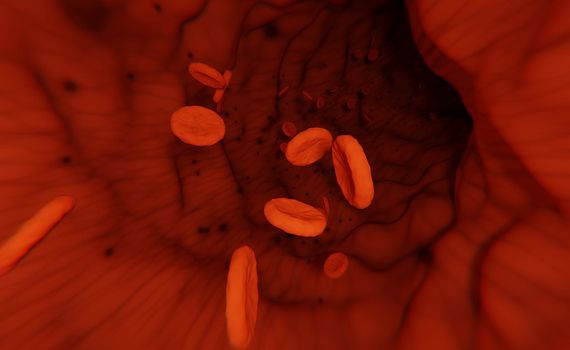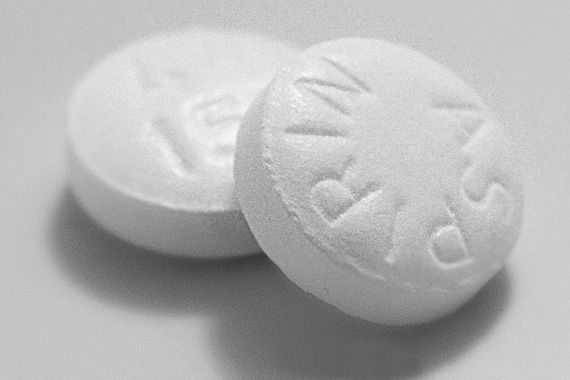Aspirin has alleviated the pain, fever and inflammation of millions of people since the brand was first registered just 120 years ago. The tablet soon replaced the medicinal use of plants that naturally contain its active ingredient, plants that were already known and prescribed two millennia earlier by Hippocrates. However, it wasn’t until 1971 that we properly understood how this medicine works, and current research into this mechanism continues to open new doors in the quest to improve our health in the future.

The texts of Hippocrates (460-370 BC), father of Greek medicine, mention for the first time the use of a concoction obtained from the bark and leaves of a type of willow, Salix latinum, which the doctor administered to his patients to relieve pain and fever. Since ancient times we have used the salicylic acid present in these trees to medicate ourselves, although until the nineteenth century we were not able to identify and isolate that chemical compound. In that century we discovered that it is a bitter yellowish substance, shaped like crystalline needles, which we call salicin.
In order to improve its flavour and reduce its side effects, especially the injuries it produced in the stomach, French chemist Charles Frederic Gerhardt added acetic anhydride to salicin, thereby synthesizing acetylsalicylic acid for the first time in 1853. More than 40 years later, researchers from the Bayer laboratories managed to produce that active principle with great purity. And so, on March 6, 1899, that pharmaceutical company registered acetylsalicylic acid in Germany under the brand name of aspirin.
The first non-steroidal anti-inflammatory drug
At first, aspirin was sold only in powder form, but soon Bayer released its popular tablet format into the market. Today the daily consumption of aspirin tablets is around 200 million worldwide. It is still one of the most used drugs, after having been the first modern synthetic drug for mass consumption. Acetylsalicylic acid was the first of the non-steroidal anti-inflammatory drugs (NSAIDs), a set of medications that, in addition to treating inflammation, are used to relieve pain and reduce fever. Aspirin works in a similar way to other NSAIDs, such as medicines based on ibuprofen, diclofenac or naproxen. (eg: Espidifen, Voltaren or Antalgin), although it has a higher antipyretic and lower anti-inflammatory capacity.

When some type of injury occurs in the body, the damaged area generates substances called prostaglandins that warn the central nervous system that something abnormal is happening there. This sets in motion the biological mechanisms of pain, fever or inflammation. In 1971, British pharmacologist John Robert Vane showed that acetylsalicylic acid interrupts these mechanisms of prostaglandin production, which earned him the 1982 Nobel Prize for Medicine. He also found that aspirin blocks the normal functioning of platelets, so it acts as a platelet antiaggregant, which prevents the formation of blood clots and protects against some cardiovascular diseases. That’s why aspirin is now also prescribed in low doses, around 100 mg daily —the usual dose is 500 mg— as part of the treatment for people who have suffered a heart attack or stroke.

A centennial medicine with new uses
For decades the WHO has included aspirin on the list of essential medicines that every health system should have. In addition to its best known uses, acetylsalicylic acid has been gaining ground in the treatment of other symptoms and ailments. It is prescribed for Kawasaki disease, an inflammation of the blood vessels that especially affects children under the age of five. It is also used in the treatment against rheumatic fever. And recent studies indicate that at low doses it can prevent the onset of different types of cancer.
The use of aspirin has been so promising that for years doctors even recommended that healthy people take an aspirin a day, especially to protect against cardiovascular diseases. However, we now know that this is not a good practice. The most recent studies indicate that the risks of internal bleeding outweigh the benefits of ingesting an aspirin daily in healthy people. It is only suggested for patients with previous cardiovascular pathologies, such as those who have suffered a myocardial infarction.

The more we study aspirin, the more properties its active ingredient seems to possess. Studies that suggest new uses continue to appear: it seems to ward off dementia, Alzheimer’s disease, cataracts or several types of cancer. For example, a study at Harvard University in the United States links the consumption of low doses of aspirin for at least six years with a 19% reduction in the probability of developing colorectal cancer, and 15% for any type of gastrointestinal cancer. Another similar study, but from the University of Oxford in the UK, indicates that taking aspirin reduces mortality rates from cancer of the esophagus, lung, stomach, pancreas and brain.
There are still years of research ahead to confirm these new properties, but it seems that aspirin might yet contain some new health surprises.
Comments on this publication